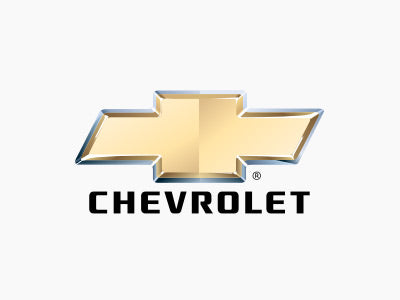Electric vehicles (EVs) are becoming increasingly popular as people seek more sustainable and innovative ways to travel. While these vehicles offer many benefits, from lower emissions to cutting-edge technology, they also come with a few surprises. One notable trend is that many new EVs don't come with a spare tire. If you've been wondering why, you're not alone. Let's delve into the reasons behind this decision, what it means for EV owners, and what you can do about it.
1. Space and Weight Considerations
One of the primary reasons EVs often lack a spare tire is space. Unlike traditional internal combustion engine (ICE) vehicles, which have a sizable trunk or cargo area, EVs frequently use that space for the battery pack. The battery is usually mounted low and centrally to improve the car's center of gravity and handling. This design maximizes efficiency and performance but leaves limited room for a spare tire.
Additionally, spare tires and their associated tools add weight. EV manufacturers are particularly focused on maximizing efficiency and range. Reducing weight by omitting a spare tire helps improve the vehicle's overall efficiency, allowing it to travel further on a single charge.
2. Advances in Tire Technology
Advancements in tire technology have also contributed to the shift away from spare tires. Many modern tires are designed to be more durable and resistant to punctures. Some come equipped with run-flat capabilities, allowing drivers to continue driving for a limited distance even after a puncture. This means that the need for a spare tire is lessened, as drivers can reach a repair shop without immediate concern.
3. Enhanced Roadside Assistance Services
Automakers are increasingly offering robust roadside assistance packages as part of their standard or optional services. These services often include tire repair or replacement, towing, and other support features. For many EV owners, the peace of mind provided by these services outweighs the need for a physical spare tire. Roadside assistance can be more efficient and reliable than changing a tire on the side of the road, especially for those unfamiliar with the process.
4. Alternative Solutions
To address the lack of a spare tire, many EVs come equipped with alternative solutions like tire sealant. These kits typically include a liquid sealant that coats the inside of the tire and an air compressor to re-inflate the tire. They are compact and lightweight, fitting easily in the trunk or under a seat, but have the downside of only temporarily slowing the leak until you can get a permanent repair done at a tire shop.
Instead, we personally use and recommend keeping tire plug kit and compact air compressor in the car. When properly used, tire plugs can last the life of the tire, they don't make a mess inside the tire and wheel, and it saves a trip to the tire shop.
Tire repair kits
Here's what we personally use and recommend:
-
SmartPro™ 12v Digital Tire Inflator Pump - 100 PSI | Portable Tire Air Compressor
★★★★★(0)$49.95$79.99Unit price /Coming Soon -
5. Design Philosophy
EV manufacturers often adopt a different design philosophy compared to traditional car makers. Their approach emphasizes modern solutions and efficiency over conventional practices. By eliminating the spare tire, manufacturers can design more aerodynamic, lighter, and spacious vehicles. This design choice also reflects the broader trend towards innovative problem-solving and sustainable practices in the automotive industry.
6. Consumer Trends
Finally, consumer preferences are shifting. Many EV buyers are tech-savvy and value convenience and modern solutions. They may prefer the compact tire repair kits and robust roadside assistance over the traditional spare tire. Manufacturers are responding to these changing preferences by offering solutions that align with contemporary lifestyles.
Conclusion
The absence of a spare tire in many electric vehicles is a reflection of the evolving automotive landscape. It's driven by considerations of space, weight, technology, and consumer preferences. While it might seem unusual at first, the trend toward alternative solutions and enhanced roadside assistance services is reshaping how we think about vehicle maintenance and design.
As EV technology continues to advance, we can expect even more innovations that redefine traditional automotive norms. For now, if you're driving an EV, it's a good idea to familiarize yourself with your vehicle’s alternative solutions and take advantage of the comprehensive support services available. The future of driving is here, and it's all about embracing new ways to keep moving forward.
Not into reading? Watch more.


Matthew Budraitis
Engineer, product designer, co-founder of EveryAmp, and a dedicated fan of EVs, technology, 3D printing, and making.
Featured blogs
View all-

The Best Tesla Model Y and 3 Accessories for Every Budget
As Tesla owners ourselves, we have some favorite accessories that we use and can recommend. You can’t go wrong with any of these picks for yourself or the Tesla Model...
Matthew Budraitis |
-

Beyond the Charge: Real Tesla Maintenance Costs
Tesla vehicles have revolutionized the automotive industry with their cutting-edge technology and impressive performance. But beyond the sleek design and instant torque, potential buyers often wonder about the long-term costs...
Matthew Budraitis |
-

Why don't Teslas have front license plates? Four Reasons.
Most US states require front license plates, but many Teslas don't have them. Here's why and how Tesla owners get away with seeming to be exempt from the law and...
Matthew Budraitis |
-

Tesla A/C Smell That Wouldn't Go Away - Finally Fixed
Tired of your Tesla's A/C smelling like rotten egg or feet after it rains? We tried evaporator cleaning, filter replacement, and a moisture barrier clip. Learn how we finally solved...
Matthew Budraitis |
-

Tesla's Time Warp: Why the Model Y "Juniper" is a 2026 Model Arriving in March 2025
Tesla's '26 Model Y in '25? It's future-proofing, software-driven updates, & marketing magic. They bend rules, not just roads.
Matthew Budraitis |
-

What is Tesla Preconditioning and Why Does It Matter?
Ever heard the term "Tesla preconditioning" and wondered what it actually means? You're not alone! This crucial feature plays a significant role in your Tesla's performance and efficiency, especially in...
Matthew Budraitis |
-

How to Charge a Tesla in 2024
New Tesla owners have many options for charging that vary in speed and price and that can be confusing. We break down Superchargers, Level 3, Level 2, Level 1, J1772,...
Matthew Budraitis |
-

SnapPlate Gen 3 - More Versatile Than Ever
Check out our new design with adjustable plate height and optional breakaway joint that is backwards compatible with all existing SnapPlates.
Kevin Braico |




















